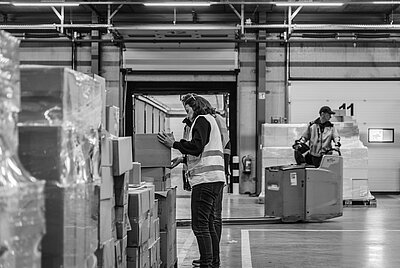Collect feedback and use it wisely
What are you doing with your customer feedback? Is it collecting dust after you’ve gathered it?
Customer feedback isn’t simply a box-ticking exercise. It’s a way of connecting to your customer, building better relationships, and establishing long-lasting loyalty that contributes to your future success.
Swedish-based Spotify is an undoubted world-leader at collecting, and listening to customer feedback to improve customer experience, products, and service. While Spotify’s listening and application of feedback is fairly sophisticated, using AI to help it create personalised playlists and song recommendations, retailers can learn from their success, and previous failures.
Spotify is doing something right – with Premium subscribers growing year-on-year. But it also invests in its customers who aren’t paying a penny – subscribers on its free plans. Back in 2019, Spotify introduced a new ad-skipping feature with the aim of delivering more relevant ads to its customers. But it wasn’t received how they hoped.
To try and understand listening behaviour further, a team at Spotify flew to Australia to visit Spotify users in their own homes to understand their wants and needs in an attempt to perfect their product.
This level of attention to detail with your customer feedback lets you create products and service that work for the people they are intended for.
Here are a few ways you can begin to collect feedback from your customers:
- Instore feedback points – asking customers to take a moment to review their visit can help you with insight into their motivation for visiting your store, how happy they are with the service they’ve received while helping you shape future store improvements, processes and even staff hires.
- Online review platforms – take ownership of your online reviews and commit to monitoring them, responding, and acting on the feedback given.
- Customer call centres – record feedback and filter it into your feedback and monitoring processes. Make sure it goes somewhere.
- Email questionnaires – actively reach out to customers to get their feedback. You can reward them for their participation by giving them discount codes or entering them into draws to win prizes.
Don’t forget to act on the feedback you receive. Negative feedback might seem tempting to leave, but investing in solutions that solve genuine problems for your customers can have the biggest impact.
Social listening
Social listening is big business for retailers in 2024. It enables retailers to maintain their brand reputation, actively listening and responding to people via online platforms (social media, online review platforms, and platforms like Reddit), picking up on the wants and needs customers have and improving shopping experiences.
But the key to successfully using social listening as part of your customer engagement strategy is not to let it exist in a silo. It needs to be fed into your planning for products and services.
Liz Miller, SVP of marketing with the CMO Council noted previously: “It is sobering to see that even in this age of omnichannel real-time engagement, so many organisations choose to view social as a free push tool and not a megaphone leveraged by customers who fully believe brands are already listening.”
So, how do you maximise the potential of social listening for your brand?
There are plenty of platforms that can help you to start listening closely to your customers online. But there are also smaller ways that you can start with to find out what people are saying about your brand and find opportunities to build relationships with them.
Don’t neglect your social media channels – people offer feedback freely on social posts and channels. Engage with people regularly and make sure that there is somewhere for that feedback to go after it’s been responded to. Whether that’s into your CRM system or into planning meetings – it needs to go somewhere.
Listen to what people are saying – this doesn’t simply have to be about your brand. This can be trending topics, opinions on service and delivery options, the environment or anything else that connects to your goals and strategy.
Build customer service platforms and touch points – a lot of brands are slimming down their customer service offering, opting for AI assistants and automated processes for returns and help. But people want human contact. According to a recent McKinsey Customer Service Survey, live phone support is still the most valued support across generations. They want to be heard.
Ultimately, by listening to your customers and offering empathy, you can create better relationships with them which are rewarded through loyalty and satisfaction – even when they have a negative experience with you. The power of turning that around shouldn’t be underestimated.
Partner with a team that listens to you in 2024 and that has Service with Guts as a key component of its DNA. Speak to us on +31 (0) 88 494 20 80 or email us at online@worldpack.eu


